|
China ratified the UNESCO Convention Concerning the Protection of World Cultural and Natural Heritage in 1985. This set the tone for a course of action aimed at protecting the common heritage of mankind in tandem with the international community. Recently, Chao Huashan, a renowned expert on world heritage studies in China, spoke to Beijing Review reporter Zan Jifang, sharing his understanding about the value of the World Heritage Convention and his suggestions for China's future work on preserving its heritage. Excerpts follow:
Beijing Review: What is your understanding of the purpose of the World Heritage Convention, and what is the significance for a site to be inscribed on the World Heritage List?
Chao Huashan: The World Heritage Convention was adopted by the General Conference of UNESCO in 1972. The aim of the convention is to better implement the common responsibility of mankind to safeguard its collective wealth and to show respect for the history, traditions and achievements of all civilizations.
The World Heritage Convention considers that some natural and cultural sites have outstanding universal value, and formally came up with the concept of "the common heritage of mankind" for the first time, which is epoch-making. The convention also called for international cooperation in preserving and protecting world heritage.
In my view, natural heritage and cultural heritage are closely related with each other and should not be seen separately. Natural sites are also heritage that our ancestors left to us. They lived there and created civilizations. So, a natural site is indispensable to the cultural activities of local people. People should pay more attention to the protection of natural sites, rather than just attaching importance to the value and protection of cultural heritage.
The inscription of a natural or cultural site as a world heritage site has significance in two aspects. On the one hand, it means that this site will henceforth enjoy a certain privilege, which can be expressed in increased tourist attraction, and financial advantage. On the other hand, it indicates a serious obligation for people to better protect and share with the world their own heritage. I think the second aspect is of greater significance.
How do you view the work China is doing to preserve and protect its own world heritage sites?
China joined the World Heritage Convention in 1985, which means China accepts the value and aims of the convention. In the process of applying for world heritage status and preserving and protecting its own world heritage sites, the concept of heritage protection in China is gradually developing and progressing. Many sites that Chinese people did not consider as heritage in the past have now been seen as heritage and have been better protected and managed.
Under the guideline of "effective protection, rational utilizing and better management," the Chinese Government is putting more effort in protecting and rescuing relic sites and ancient architecture. Such a guideline conforms to the ideas, regulations and resolutions of the World Heritage Convention.
Since 1994, the World Heritage Committee under UNESCO has sent many experts to China to carry out inspections on the protection and management of world heritage sites, such as the Great Wall and the Forbidden City. They recognized the achievements that China has made in this area and also frankly pointed out some problems and provided suggestions. Their valuable advice has made a big difference to the country's heritage protection work.
In your opinion, what are the major problems now in this field? What suggestions do you have for future heritage protection work in China?
A prominent problem in my view is that some cultural and natural sites have been over-exploited for economic gain. If such a situation persists, the authenticity and integrity of these sites would be gravely damaged.
Currently, many big cities in China that have long history are not inscribed on the world heritage list. More than 20 countries have certain historical zones in their capitals inscribed on the World Heritage List, showing the influence of the site on the evolution of the city. The banks of the River Seine in Paris is a good example.
In addition, the criteria in China when considering the value of a site sometimes differ from those of the World Heritage Committee in some aspects. Take the Lushan Mountain for example, the major value of the site from a Chinese perspective is its wonderful scenery, while in the eyes of the experts of the World Heritage Committee, the major value are the Western-styled architectural buildings built during the 1920s-30s. Thus, because of the difference of concept, the focus of protection and management will differ.
My suggestions are that China should have a special law for the protection and management of world heritage sites and set up a national-level institution to manage this matter. Besides this, in my opinion, China should apply for more natural heritage sites in the future, as the proportion of natural sites in China's total world heritage sites is small. The focus of future protection activities should focus on those sites that embody cultural exchanges and cultural diversity and sites that have had a great impact on the industrial and agricultural development of the local area during a certain time frame.
You teach a course on world heritage at Peking University. What do you hope to impart in such a course?
I often tell my students that when we appreciate world heritage, we should feel gratitude to our ancestors. It is because of their intended or involuntary protection that people today are lucky to see these sites, which include both cultural and natural sites. Although people today do not contribute to the creation of these sites, we could still preserve them. By doing this, we have also contributed to the passing down of the heritage and made it possible for future generations to also appreciate these wonders. In other words, the destiny of the heritage is in hands of today's young people. So it is very important to let youngsters receive relevant education about the significance of preserving and protecting these treasured cultural and natural sites, as they are the future protectors of this heritage.
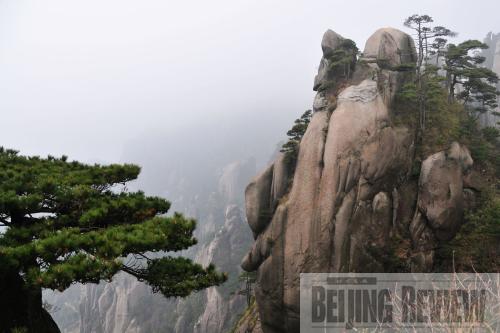 |
| Sanqingshan Mountain |
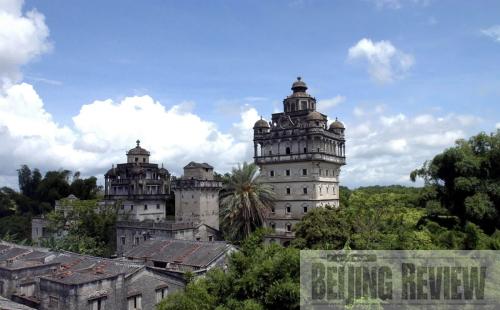 |
| Kaiping Diaolou |
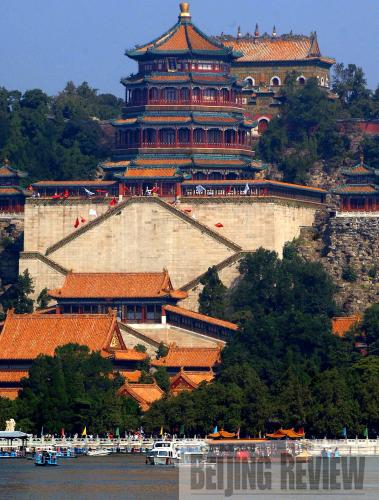 |
| Summer Palace |
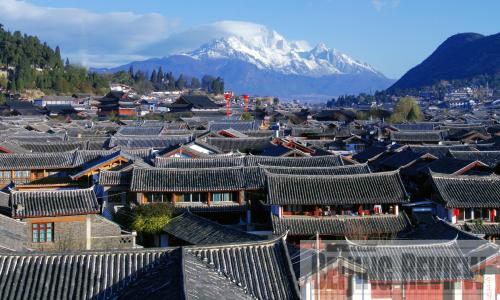 |
| Old Town of Lijiang |
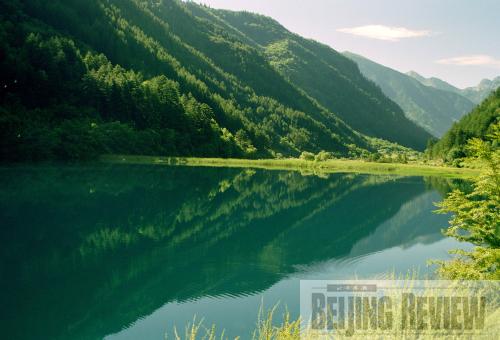 |
| Jiuzhaigou |
Chinese Properties Inscribed on the World Heritage List
Cultural
1. The Great Wall (Beijing, 1987)
2. Imperial palaces of the Ming and Qing dynasties in Beijing and Shenyang (the Forbidden City, Beijing, 1987; Imperial Palace of the Qing Dynasty, Shenyang, Liaoning Province, 2004)
3. Peking Man Site at Zhoukoudian (Beijing, 1987)
4. Mogao Caves (Gansu Province, 1987)
5. Mausoleum of the First Qin Emperor (Shaanxi Province, 1987)
6. Mountain resort and its outlying temples, Chengde (Hebei Province, 1994)
7. Historic ensemble of the Potala Palace, Lhasa (Tibet Autonomous Region, 1994)
8. Temple and cemetery of Confucius and the Kong Family Mansion in Qufu (Shandong Province, 1994)
9. Ancient building complex in the Wudang Mountain (Hubei Province, 1994)
10. Lushan National Park (Jiangxi Province, 1996)
11. Ancient city of Pingyao (Shanxi Province, 1997)
12. Classical gardens of Suzhou (Jiangsu Province, 1997)
13. Old town of Lijiang (Yunnan Province, 1997)
14. Summer Palace, an imperial garden in Beijing (Beijing, 1998)
15. Temple of Heaven, an imperial sacrificial altar in Beijing (Beijing, 1998)
16. Dazu Rock Carvings (Chongqing, 1999)
17.Imperial mausoleums of the Ming and Qing dynasties (Ming Xianling Mausoleum, Hubei Province, 2000; Qing Dongling Mausoleum and Qing Xiling Mausoleum, Hebei Province, 2000; Ming Tombs, Beijing, 2003; Ming Xiaoling Mausoleum, Jiangsu, 2003; three imperial mausoleums of Shengjing, Liaoning Province, 2004)
18. Longmen Grottoes (Henan Province, 2000)
19. The Qingcheng Mountain and the Dujiangyan Irrigation System (Sichuan Province, 2000)
20. Ancient villages in southern Anhui—Xidi and Hongcun (Anhui Province, 2000)
21. Yungang Grottoes (Shanxi Province, 2001)
22. Capital cities and tombs of the Ancient Koguryo Kingdom (Liaoning and Jilin provinces, 2004)
23. Historic center of Macao (Macao Special Administrative Region, 2005)
24. Yinxu (Henan Province, 2006)
25. Kaiping Diaolou and villages (Guangdong Province, 2007)
26. Fujian Tulou (Fujian Province, 2008)
27. Wutai Mountain (Shanxi Province, 2009)
Natural
28. Huanglong Scenic and Historic Interest Area (Sichuan Province, 1992)
29. Jiuzhaigou Valley Scenic and Historic Interest Area (Sichuan Province, 1992)
30. Wulingyuan Scenic and Historic Interest Area (Hunan Province, 1992)
31. Three Parallel Rivers of Yunnan Protected Areas (Yunnan Province, 2003)
32. Sichuan giant panda sanctuaries—Wolong, Siguniang Mountain and Jiajin Mountain (Sichuan Province, 2006)
33. South China Karst (Yunnan Province, Guizhou Province and Chongqing Municipality, 2007)
34. The Sanqing Mountain National Park (Jiangxi Province, 2008)
Mixed
35. Taishan Mountain (Shandong Province, 1987)
36. Huangshan Mountain (Anhui Province, 1990)
37. Emei Mountain Scenic Area, including Leshan Giant Buddha Scenic Area (Sichuan Province, 1996)
38. Wuyi Mountain (Fujian Province, 1999)
| 